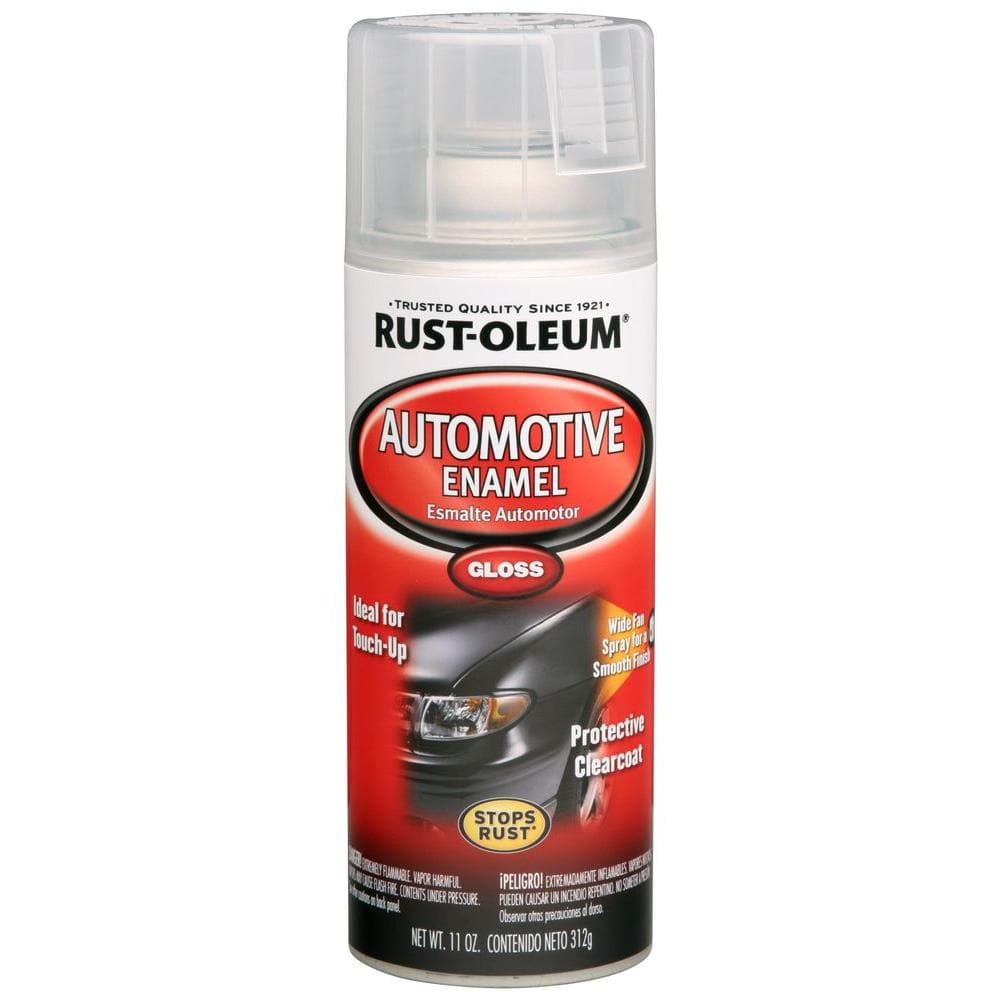Yes, you can spray paint over clear coat, but it’s important to properly prepare the surface beforehand. Clear coat serves as a protective layer for the underlying paint, so it must be sanded down and cleaned before applying a new layer of paint.
This will ensure that the new paint adheres properly and doesn’t peel or chip off. Additionally, using a primer before the new paint can help improve adhesion and durability. It’s important to choose the right type of paint for the surface you are painting, such as automotive paint for cars or enamel paint for metal surfaces.
Taking these steps will help ensure a successful paint job that looks great and lasts a long time.
Contents
Introduction To Spray Painting Over Clear Coat
Why Consider It?
Spray painting over clear coat can be a convenient way to refresh the appearance of your vehicle or other painted surfaces without the need for a full repaint. It allows you to make minor touch-ups or changes to the color without having to completely strip the existing clear coat.
Potential Challenges
While spray painting over clear coat can offer certain benefits, it also presents potential challenges. One of the main issues is ensuring proper adhesion and achieving a smooth, professional finish. Additionally, compatibility between the existing clear coat and the new paint must be carefully considered to avoid issues such as peeling or bubbling.
Essential Tools And Materials
Spray painting over clear coat can be tricky and requires the right tools and materials. It’s essential to properly prepare the surface, use high-quality primer, and choose the right type of spray paint for the job. With the right approach, you can achieve a smooth and durable finish.
If you want to spray paint over clear coat, you need to have the right tools and materials to ensure a successful and long-lasting finish. Here are the essential items you’ll need to get started.Choosing The Right Spray Paint
Choosing the right spray paint is crucial to achieving the desired finish. When selecting a spray paint, consider factors such as the color and finish, the type of surface you’ll be painting on, and the type of clear coat you’ll be painting over. Some of the best spray paint brands for painting over clear coat include Rust-Oleum, Krylon, and Dupli-Color.Preparation Equipment
Before you start spraying, you’ll need to prepare the surface by cleaning it and removing any old paint or debris. Here are some essential preparation tools and equipment you’ll need:- A high-pressure washer or hose
- Sandpaper or sanding block
- Primer or adhesion promoter (if necessary)
- Painter’s tape and plastic sheeting to mask off areas you don’t want to paint
- A respirator mask to protect yourself from fumes
Painting Equipment
Once you’ve prepared the surface, it’s time to start painting. Here are the essential painting tools and equipment you’ll need:- A spray gun or aerosol can
- Air compressor (if using a spray gun)
- A paint strainer to remove any impurities from the paint
- A mixing cup and stir stick to ensure the paint is well-mixed
- A spray booth or well-ventilated area to prevent overspray and fumes
Preparing The Surface
When it comes to spray painting over clear coat, proper surface preparation is essential to ensure a successful and long-lasting finish. Preparing the surface involves cleaning the clear coat and sanding for adhesion, which are crucial steps in achieving a professional-looking result.
Cleaning The Clear Coat
Before applying spray paint over clear coat, it’s important to thoroughly clean the surface to remove any dirt, dust, or contaminants that could affect the adhesion of the new paint. Use a mild detergent and water solution to wash the clear coat, followed by rinsing with clean water and allowing it to dry completely.
Sanding For Adhesion
Once the clear coat is clean and dry, sanding the surface is necessary to create a rough texture that promotes better adhesion of the new paint. Use fine-grit sandpaper (around 800-1000 grit) to gently sand the entire area in a circular motion, ensuring an even and consistent texture. After sanding, wipe down the surface with a tack cloth to remove any sanding residue before proceeding with the spray painting process.

Credit: www.homedepot.com
Application Techniques
When it comes to application techniques for spray painting over clear coat, there are several factors to consider. The right application techniques can ensure a smooth and durable finish that adheres well to the existing clear coat. Here are some important application techniques to keep in mind:
Spray Patterns
Utilize a consistent side-to-side motion when spraying the paint to achieve an even application. Overlap each pass by about 50% to avoid streaks and ensure thorough coverage. This technique helps to prevent uneven distribution of paint and promotes a professional-looking finish.
Layering For Durability
Apply multiple thin layers of paint rather than a single heavy coat. This approach allows each layer to bond well with the clear coat and ensures better durability. Allow each layer to dry completely before applying the next one to prevent running and ensure a smooth, professional finish.
Common Mistakes To Avoid
When it comes to painting a car, there are a lot of things to consider. One of the most common questions that people ask is whether they can spray paint over clear coat. The answer is yes, but there are some common mistakes that you need to avoid if you want to get the best results.
Overapplication
One of the most common mistakes that people make when spray painting over clear coat is overapplication. If you apply too much paint, it can cause the surface to become uneven and bumpy. This can also lead to the paint cracking and peeling over time. To avoid this, it’s important to apply thin, even coats of paint. You can always add another coat if needed, but it’s much harder to remove excess paint once it’s already been applied.
Ignoring Environmental Factors
Another mistake that people make when spray painting over clear coat is ignoring environmental factors. Temperature, humidity, and wind can all affect the way that paint dries and adheres to the surface. If it’s too hot or too cold, the paint may not dry properly. If it’s too humid, the paint may not adhere well to the surface. If it’s too windy, the paint may blow away or become contaminated with dirt and debris. To avoid these issues, it’s important to choose the right conditions for painting and to take steps to protect the surface from the elements.
Spray painting over clear coat can be a great way to give your car a new look, but it’s important to avoid common mistakes if you want to get the best results. By applying thin, even coats of paint and paying attention to environmental factors, you can ensure that your paint job looks great and lasts for years to come.
Drying And Curing
When spray painting over clear coat, understanding the process of drying and curing is essential for achieving a professional finish. Proper drying and curing times, as well as the optimal conditions for these processes, are crucial for the longevity and durability of the painted surface.
Timeframe Expectations
The timeframe for drying and curing when spray painting over clear coat varies depending on several factors, including the type of paint used and environmental conditions. Generally, drying occurs within a few minutes to an hour, while curing can take anywhere from 24 hours to several weeks.
Conditions For Optimal Curing
Optimal curing conditions are essential for ensuring the longevity and durability of the paint job. Temperature and humidity play significant roles in the curing process. The ideal temperature for curing is between 60-75°F, with relative humidity below 50%. Additionally, proper ventilation is crucial to allow the solvent to evaporate effectively.
Finishing Touches
When it comes to spray painting over a clear coat, the finishing touches are crucial to achieving a professional and durable result. In this final stage, you’ll want to focus on buffing for shine and applying a protective layer to ensure that your paint job looks great and lasts for a long time.
Buffing For Shine
Buffing the freshly painted surface is essential for achieving a smooth and glossy finish. Using a fine-grit sandpaper, gently sand the painted area to remove any imperfections or orange peel texture. After sanding, apply a rubbing compound to the surface and buff it with a clean microfiber cloth in circular motions. This process will bring out the shine and luster of the paint, giving it a showroom-quality appearance.
Applying A Protective Layer
Once the paint has been buffed to perfection, it’s important to apply a protective layer to safeguard the paint and clear coat from environmental damage. A high-quality automotive wax or sealant can provide an additional barrier against UV rays, dirt, and moisture. Apply the wax or sealant using a clean applicator pad, following the product’s instructions for the best results. This protective layer will not only enhance the visual appeal of the paint but also prolong its lifespan.

Credit: www.youtube.com
Maintenance Tips
Proper maintenance is key to ensuring the longevity and appearance of any spray-painted surface. Whether you’re looking to refresh the color of your car or give a new life to a piece of furniture, taking care of the clear coat and knowing when to reapply it is essential. In this section, we will cover some maintenance tips to help you keep your spray-painted surfaces looking their best.
Regular Cleaning
Regular cleaning is an important part of maintaining any spray-painted surface. Dust, dirt, and other debris can accumulate over time, affecting the appearance of the clear coat. To keep your painted surface clean, follow these simple steps:
- Gently rinse the surface with water to remove any loose dirt or debris.
- Prepare a mild soap solution by mixing a few drops of dish soap with water.
- Using a soft sponge or cloth, gently scrub the surface in a circular motion.
- Rinse the surface thoroughly with clean water.
- Pat dry with a soft, lint-free cloth.
Regular cleaning not only helps remove dirt and grime but also prevents them from scratching the clear coat when left unattended.
When To Reapply
Knowing when to reapply the clear coat is crucial to maintaining the quality and durability of your spray-painted surface. Over time, the clear coat may start to fade or become damaged due to exposure to sunlight, harsh weather conditions, or general wear and tear. Here are some signs that indicate it’s time to reapply the clear coat:
- Fading or dullness of the color
- Visible scratches or chips
- Loss of gloss or shine
- Peeling or flaking of the clear coat
If you notice any of these signs, it’s important to take action promptly. Begin by thoroughly cleaning the surface and then follow the manufacturer’s instructions for applying a new coat of clear spray paint. This will not only revive the appearance of the surface but also provide an additional layer of protection.
By following these maintenance tips, you can ensure that your spray-painted surfaces stay vibrant and protected for years to come.

Credit: www.reddit.com
Frequently Asked Questions
Can You Spray Paint Over Clear Coat?
Yes, you can spray paint over clear coat, but it requires careful preparation. Sand the clear coat lightly, clean the surface thoroughly, and apply a primer before spray painting. Ensure compatibility between the existing clear coat and the new paint for the best results.
Conclusion
To conclude, spray painting over clear coat can be a viable option for giving your surface a fresh new look. However, it is crucial to properly prepare the surface by cleaning and sanding it to ensure proper adhesion. Additionally, using the right type of spray paint and applying multiple thin coats will yield the best results.
Remember to follow safety precautions and work in a well-ventilated area. So go ahead and transform your clear-coated surfaces with a little spray paint magic!
